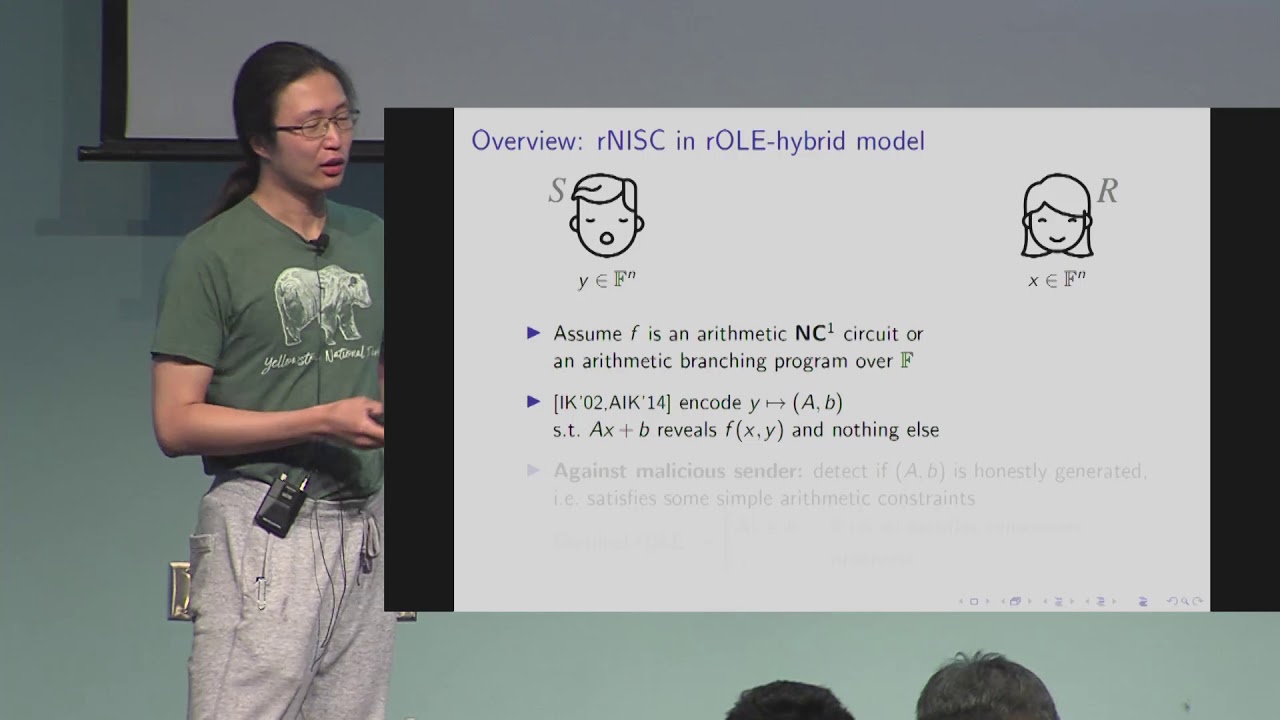Welcome to the resource topic for 2018/940
Title:
Reusable Non-Interactive Secure Computation
Authors: Melissa Chase, Yevgeniy Dodis, Yuval Ishai, Daniel Kraschewski, Tianren Liu, Rafail Ostrovsky, Vinod Vaikuntanathan
Abstract:We consider the problem of Non-Interactive Secure Computation (NISC), a 2-message Sender-Receiver'' secure computation protocol that retains its security even when both parties can be malicious. While such protocols are easy to construct using garbled circuits and general non-interactive zero-knowledge proofs, this approach inherently makes a non-black-box use of the underlying cryptographic primitives and is infeasible in practice. Ishai et al. (Eurocrypt 2011) showed how to construct NISC protocols that only use parallel calls to an ideal oblivious transfer (OT) oracle, and additionally make only a black-box use of any pseudorandom generator. Combined with the efficient 2-message OT protocol of Peikert et al. (Crypto 2008), this leads to a practical approach to NISC that has been implemented in subsequent works. However, a major limitation of all known OT-based NISC protocols is that they are subject to selective failure attacks that allows a malicious sender to entirely compromise the security of the protocol when the receiver's first message is reused. Motivated by the failure of the OT-based approach, we consider the problem of basing \emph{reusable} NISC on parallel invocations of a standard arithmetic generalization of OT known as oblivious linear-function evaluation (OLE). We obtain the following results: - We construct an information-theoretically secure reusable NISC protocol for arithmetic branching programs and general zero-knowledge functionalities in the OLE-hybrid model. Our zero-knowledge protocol only makes an absolute constant number of OLE calls per gate in an arithmetic circuit whose satisfiability is being proved. As a corollary, we get reusable NISC/OLE for general Boolean circuits using any one-way function. - We complement this by a negative result, showing that reusable NISC/OT is impossible to achieve, and a more restricted negative result for the case of the zero-knowledge functionality. This provides a formal justification for the need to replace OT by OLE. - We build a universally composable 2-message OLE protocol in the CRS model that can be based on the security of Paillier encryption and requires only a constant number of modular exponentiations. This provides the first arithmetic analogue of the 2-message OT protocols of Peikert et al. (Crypto 2008). - By combining our NISC/OLE protocol and the 2-message OLE protocol, we get protocols with new attractive asymptotic and concrete efficiency features. In particular, we get the first (designated-verifier) NIZK protocols where following a statement-independent preprocessing, both proving and verifying are entirely non-cryptographic’’ and involve only a constant computational overhead.
ePrint: https://eprint.iacr.org/2018/940
Talk: https://www.youtube.com/watch?v=HA7CIZw7s5U
See all topics related to this paper.
Feel free to post resources that are related to this paper below.
Example resources include: implementations, explanation materials, talks, slides, links to previous discussions on other websites.
For more information, see the rules for Resource Topics .
